It’s a wrap. Julestemning nu!
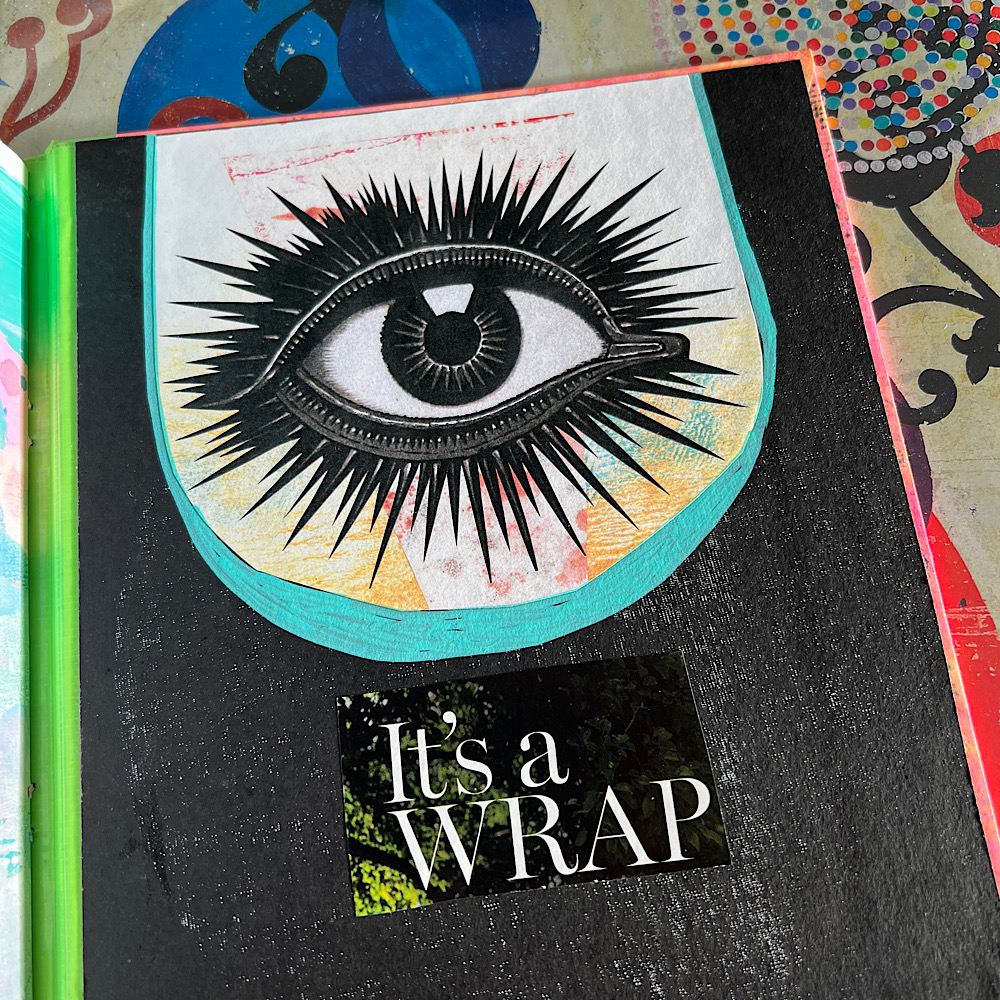
Das wars für dieses Jahr. Schluß aus fertig. Tee in die Tasse, Zimtstern auf den Teller und ab aufs Sofa… Ich verabschiede mich für dieses Jahr hier im Blog. Verschnaufen und Rückblicken und Planen für`s nächste Jahr ist angesagt. Und natürlich Plätzchen backen, Oh Tannebaum und Ohren zuhalten, wenn ringsrum geböllert wird… Na ja, noch […]
Kristina lernt nähen – der Bahnhof bekommt jetzt einen Kragen…
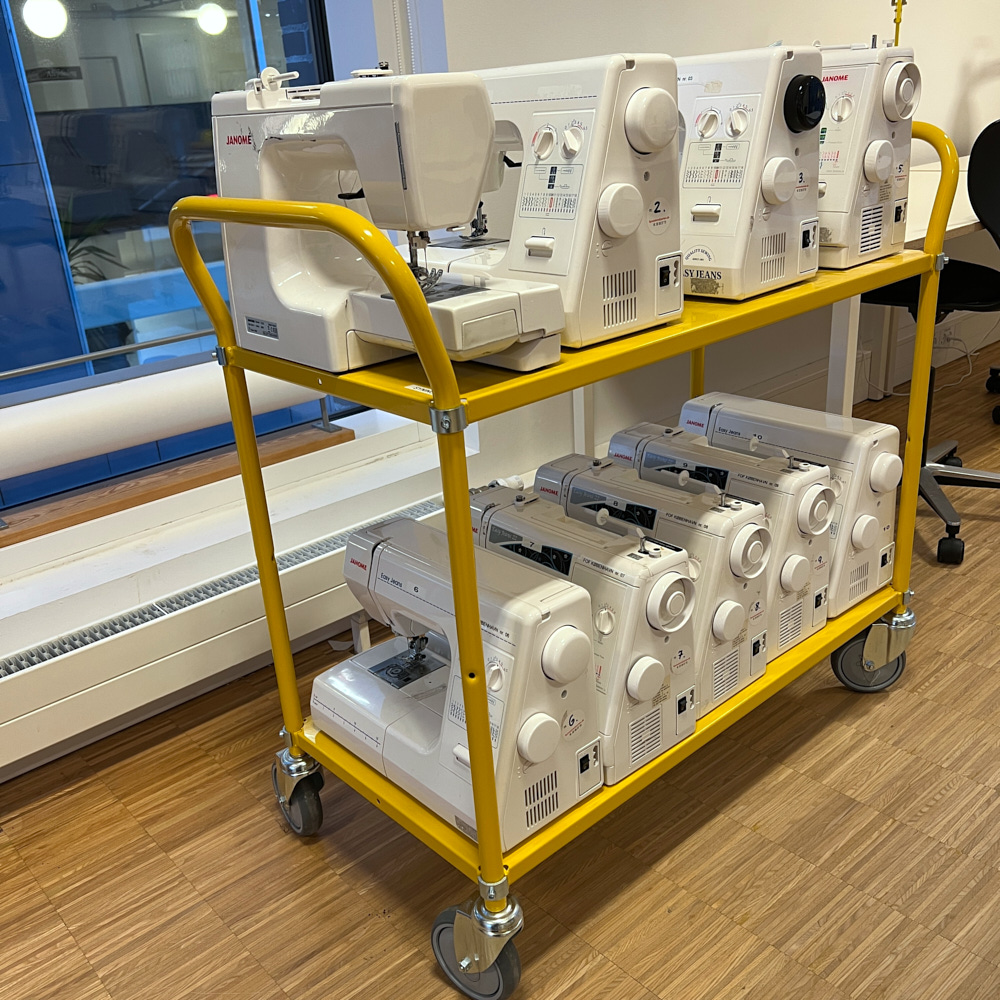
Mein Nähprojekt „Passendes Oberteil“ schreitet voran. Wenn auch nur langsam. Aber das ist ok. Der Nähkurs, den ich seit September besuche, ist jetzt vorerst beendet. ich habe mich aber für nächstes Jahr wieder angemeldet und werde an meiner Bluse weiterfrickeln.Fertig bekommen habe ich das allererste Probeteil nicht. Das macht aber nichts. Falls der Grundschnitt mir […]
12 von 12 im Dezember
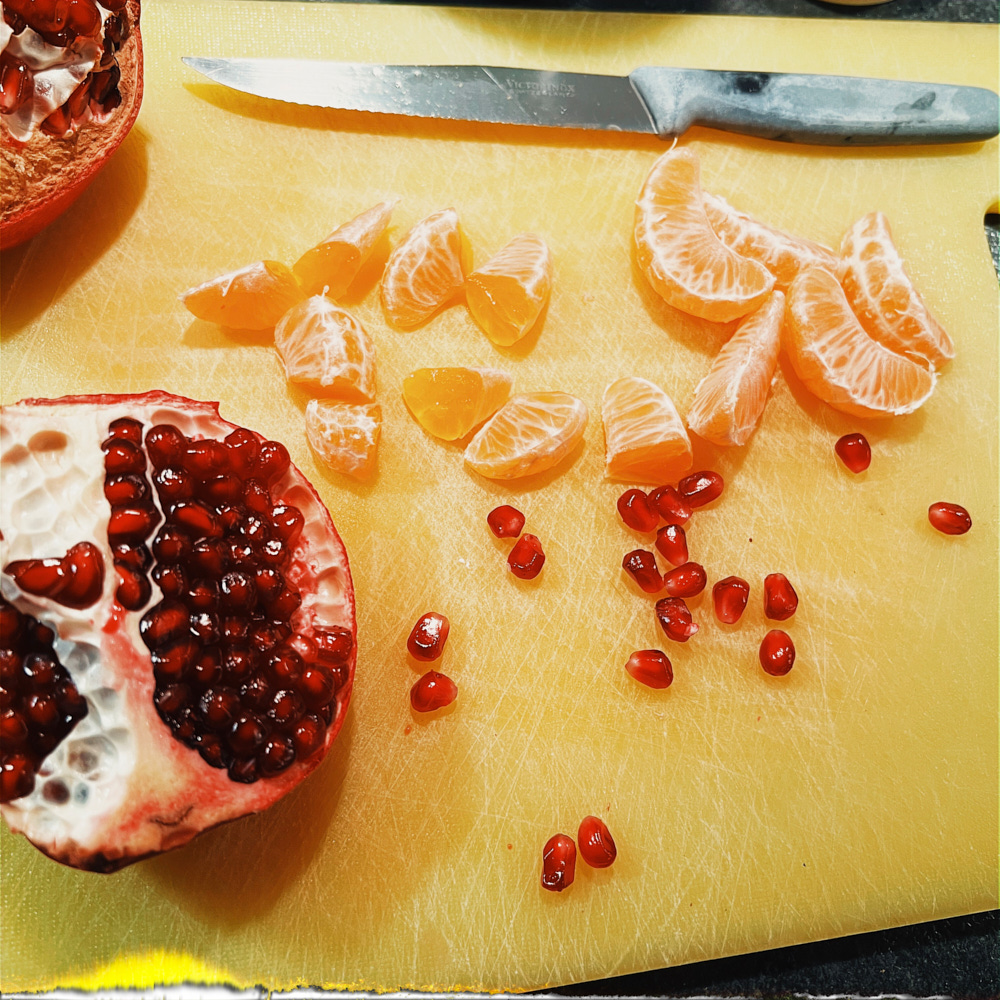
Gestern war der 12. Dezember und auch in diesem Monat gibt es meine Dokumentation des Tages am 13. Bevor ich anfange, den Text zu den Bildern zu schreiben, gucke ich mir an, was ich an vergangenen Dezembermonaten am 12. gemacht hab und stelle fest, dass das erste Bild in 2023 ebenfalls Granatapfel auf Schneidebrett zeigt. Das […]
Kopenhagen Spaziergang Humleby und Künstlerbücher im Dezember
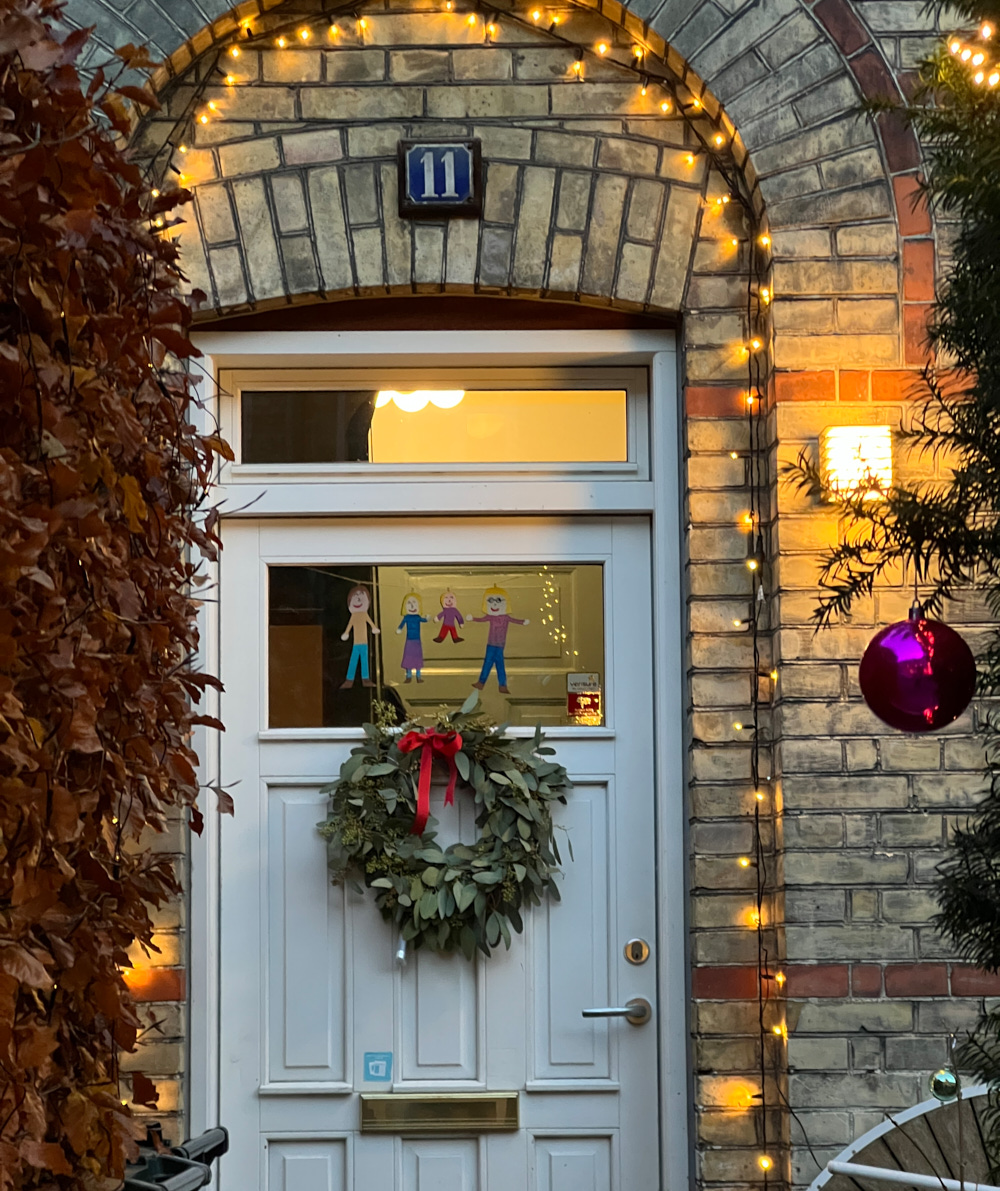
So geht er dahin, der Dezember…zwischen geschäftiger Werkelei, dem Rückblick auf das Jahr und Vorbereitungen für 2026… mit einer Prise Glitzer, Keksen und ein wenig Adventsstimmung abseits von Weihnachtsmarktdedöns und Co.Ich versuche, noch ein paar angefangene Journals fertig zu basteln und vielleicht noch die eine oder andere Seite darin zu füllen. Auf den Adventskalender mochten […]
Skizzenbücher und ich – eine Hassliebe oder wie ich zum Buch kam
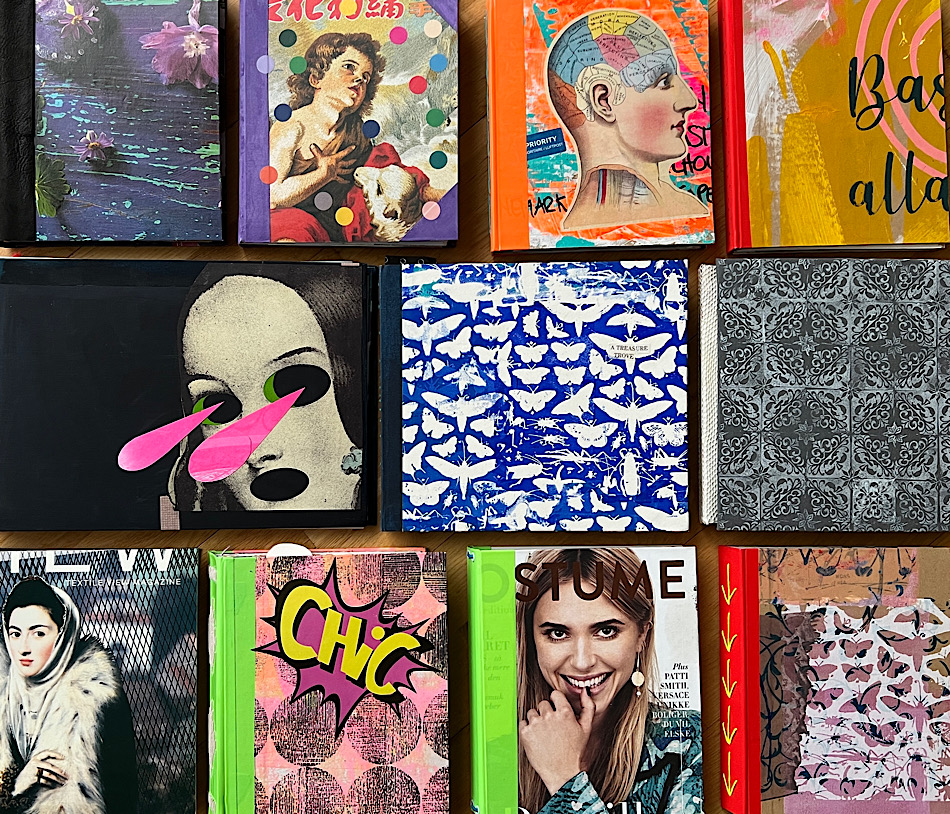
Bücher zu machen ist eine feine Sache. Ich finde es unheimlich befriedigend, ein selbst gefülltes, fertiges Buch in der Hand zu halten. Das kann ich sowohl aus mehrfacher Erfahrung als Buchautorin bzw. Co-Autorin von „richtigen“ Büchern, also vom Verlag veröffentlicht, sagen, als auch auf meine eigenen Journals oder Ideenbücher bezogen.Eigene Bücher anzufertigen und das Arbeiten […]
Kreativ-Kisten Chaos und Ausblick auf das Programm im Atelierhaus in 2026
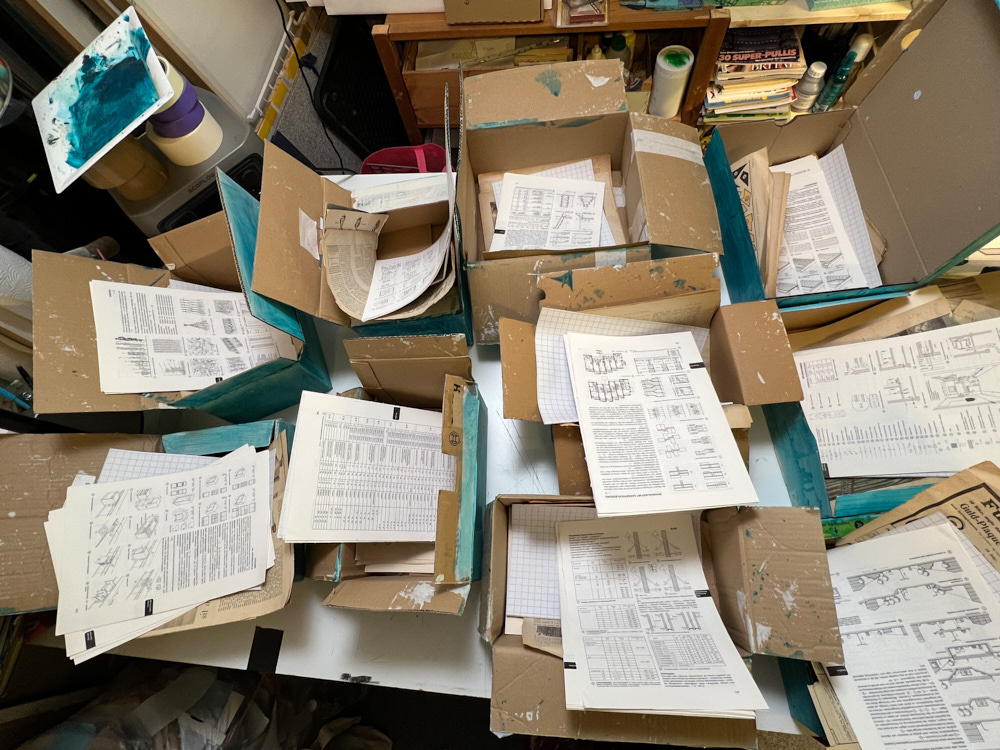
Als ich 2022/23 ins Abenteuer Online-Business gestartet bin, hatte ich keinen minutiös ausgearbeiteten Plan, nach dem ich mich richten konnte sondern habe mich getreu dem Motto „Start before you’re ready“ mit einer Mischung aus Neugier, Lust auf gemeinsames Arbeiten und ordentlich Bammel reingestürzt in das Projekt. Unterstützt von meiner Gründungsgruppe, hat sich vieles entwickelt. Aus […]
Ramilleta Bling Bling! Es weihnachtet in Kristinas Atelierhaus
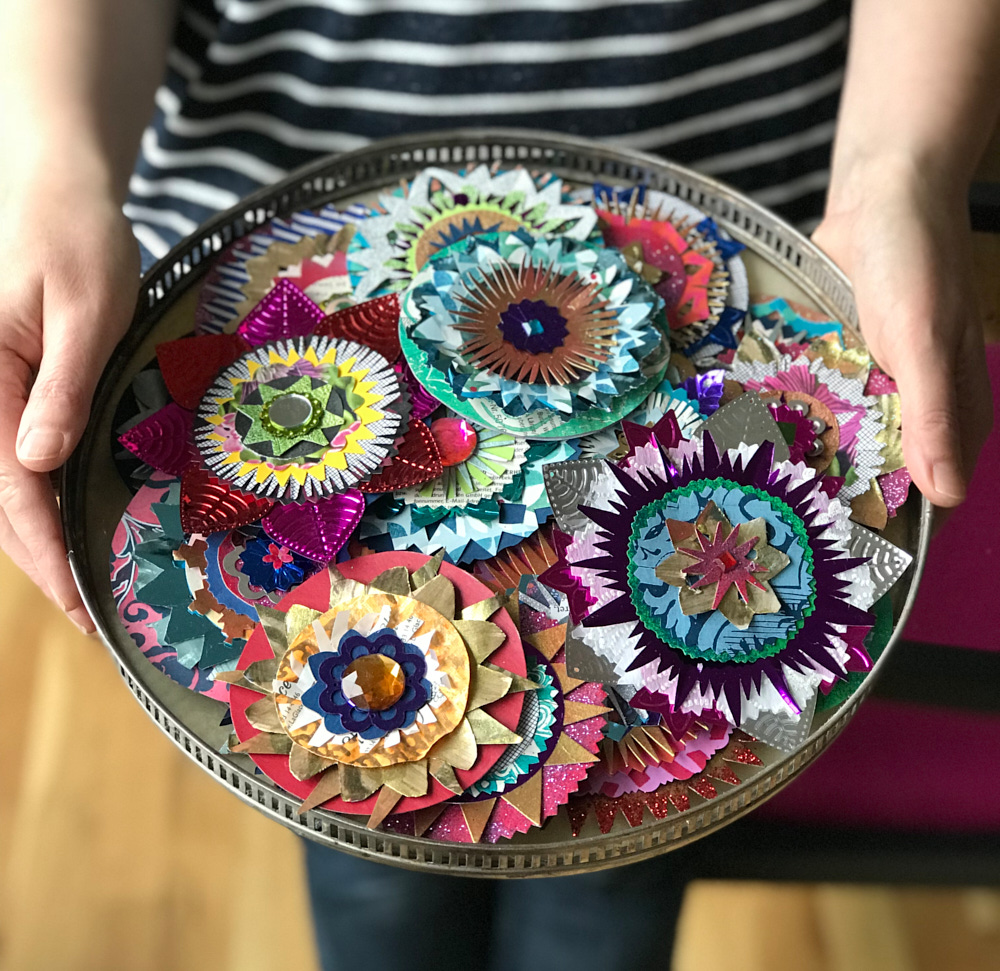
Grau ist es. Und Dunkel. Und kalt. Gegen das Novembergrau hilft bekanntlich eine ordentliche Portion Farbe und Glitzerblingbling kann auch nicht schaden. Alle, die meinen Blog schon länger lesen, erinnern sich vielleicht noch dunkel an meine Ramilletas aus buntem Papier und Glitzer-Mix? 2017 (so lange ist das schon her!) bin ich beim Basteln von Weihnachtsbaumschmuck […]
12 von 12 im November
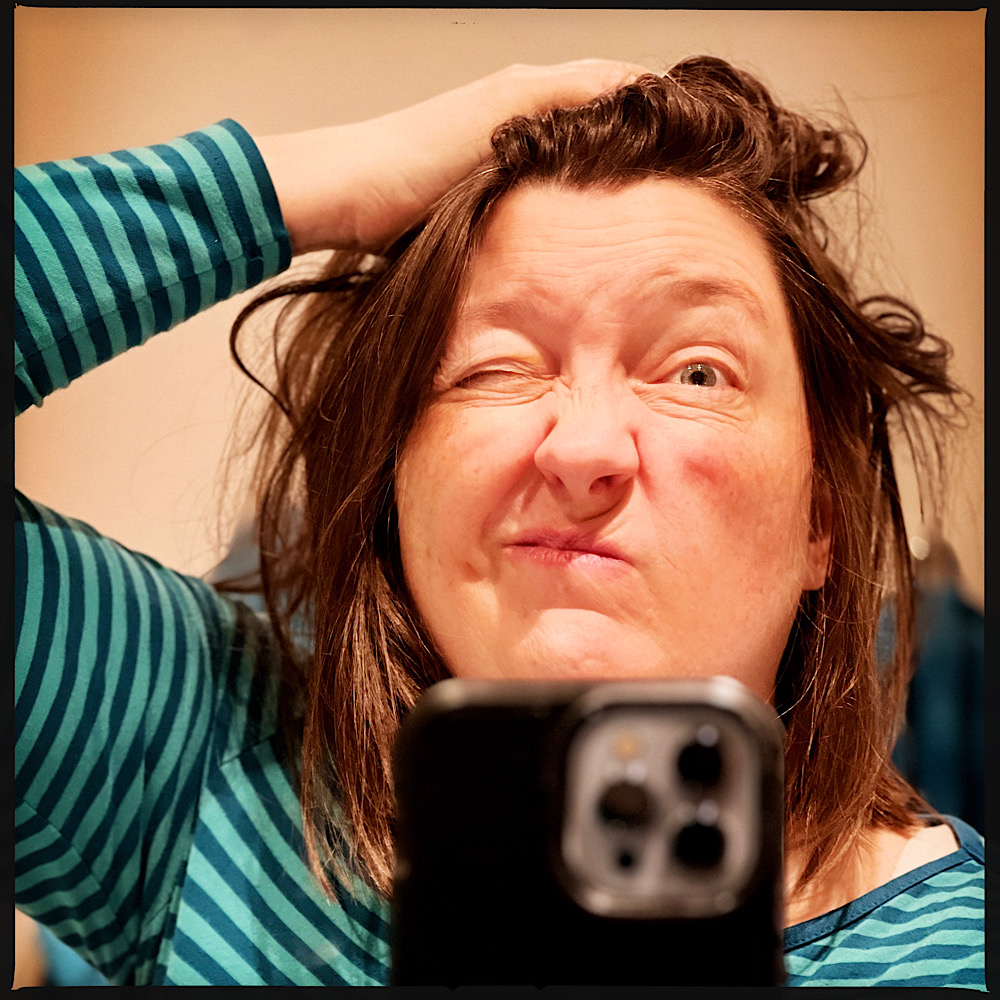
Moin! Gestern war der 12. November, ein Mittwoch. Manchmal schaffe ich es, mich gleich nach dem Aufwachen daran zu erinnern, daß ich meinen Tag in zwölf Bildern dokumentieren will. Was soll ich sagen, es ist früh am Morgen. November, müde und überhaupt. Die morgentliche Kinder-aus-dem-Haus-Zeremonie bringen wir hinter uns. Kaffee und Dusche helfen. Mittwoch ist […]
Aufräumbuchbinden im Atelierhaus – Ideenbücher nach Arne und Carlos
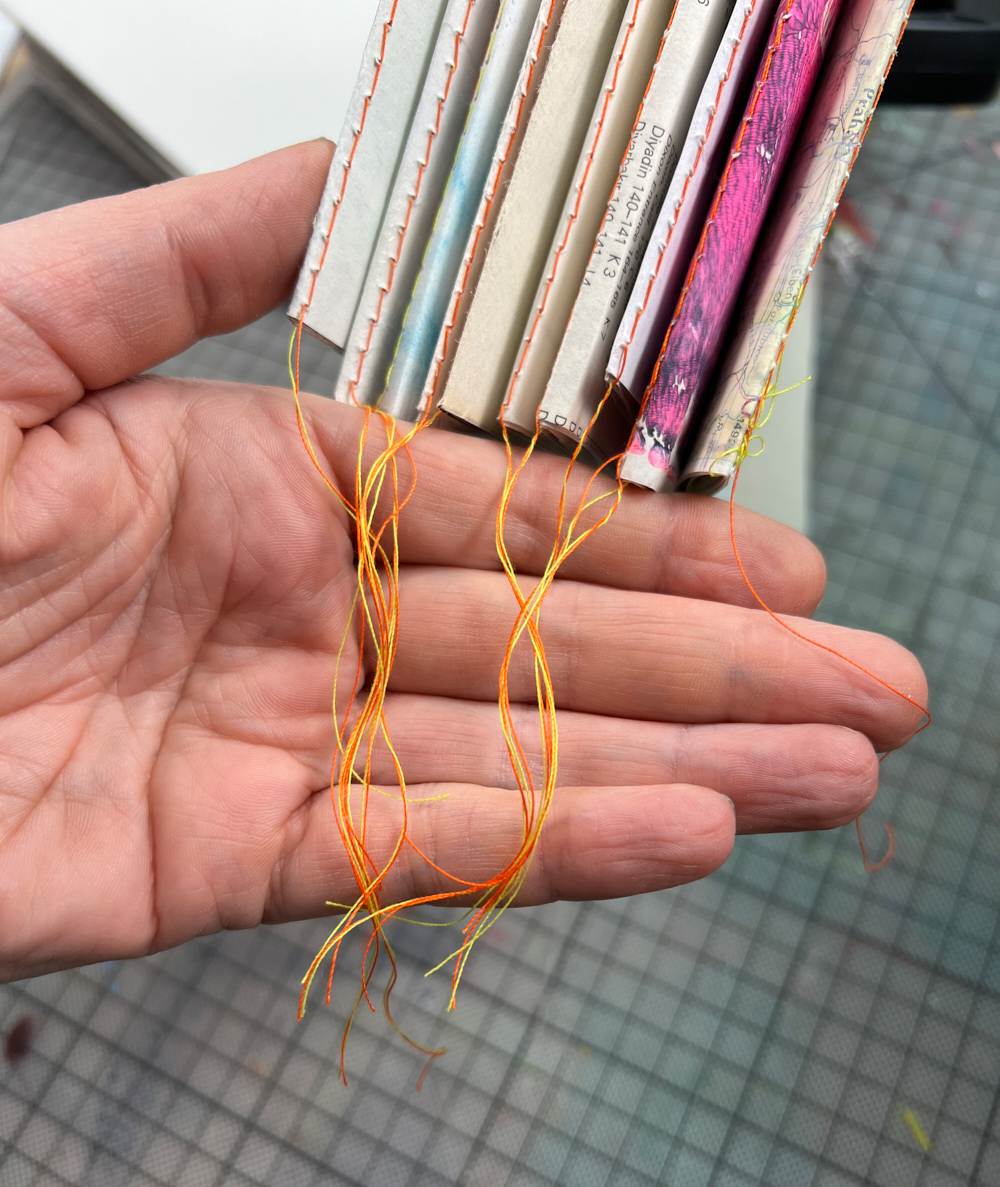
Die Woche 41 im Atelierhaus hatte es in sich! Zum ersten Mal habe ich 3 Termine für Zoom Live Workshops zum gleichen Thema in einer Woche angesetzt. Mit dem Hintergedanken, ein Thema intensiver zu bearbeiten. Gemeinsam in der Gruppe oder alternativ anhand der Aufzeichnungen später am Tag. Ich war gespannt, wie sich das umsetzen lassen […]
Siebdrucken mit Seele – die Bilder aus Bielefeld
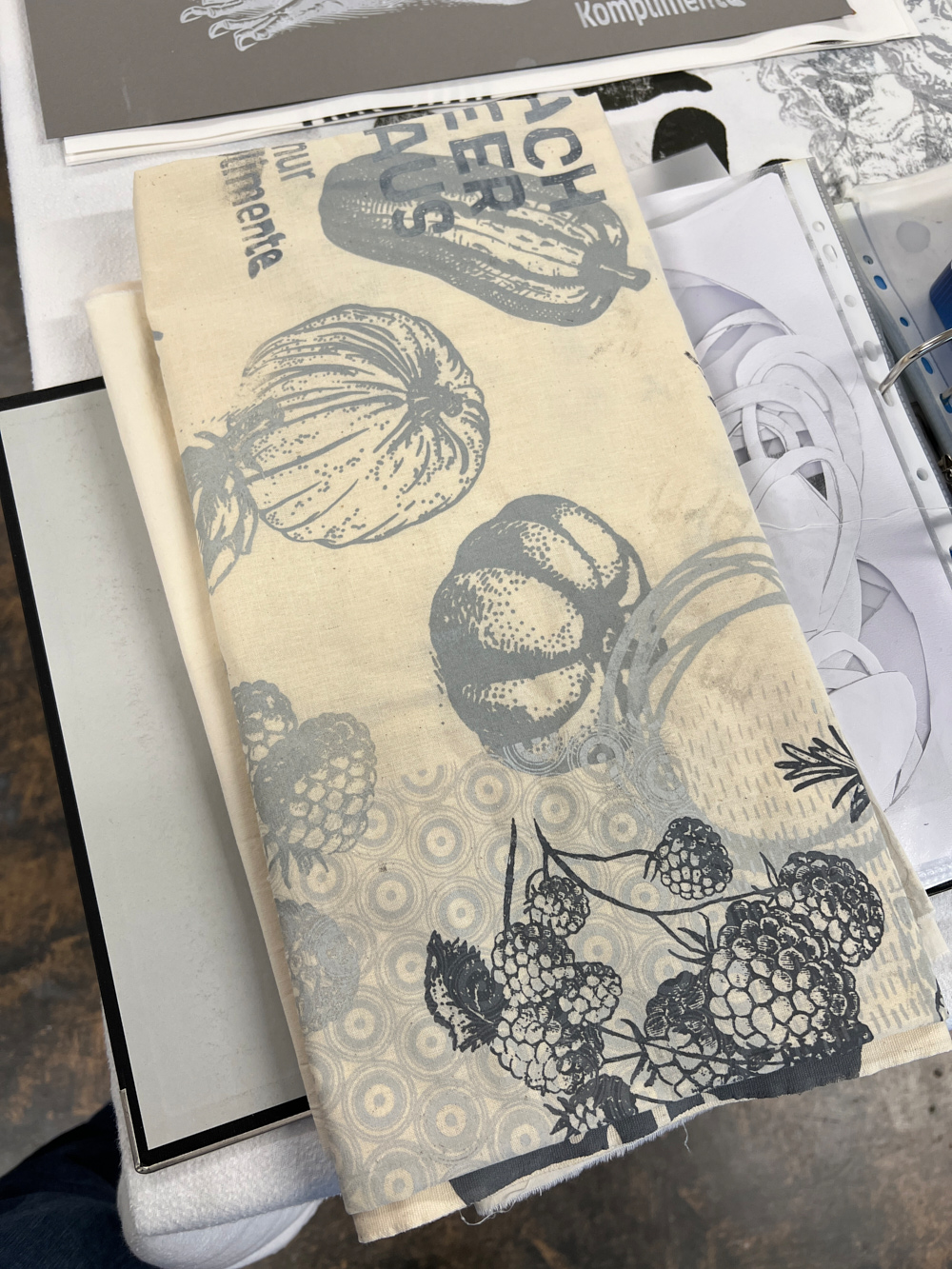
Viele Bilder, wenig Text ist mein Motto für diesen Blogpost. Alle, die hier schon länger mitlesen bzw. mitschauen, kennen meine Workshop-Bildersammlungen ja bereits. Drei Workshoptage im neuen Atelier von Claudia in Bielefeld schliessen mein Workshopjahr 2025 ab. Es wurde entworfen und gedruckt, experimentiert und ausprobiert und geschmaust und gelacht. Schön war es! Die Fotos sind […]
Beginner’s Mind oder Kristina lernt Nähen und versteht nur Bahnhof…
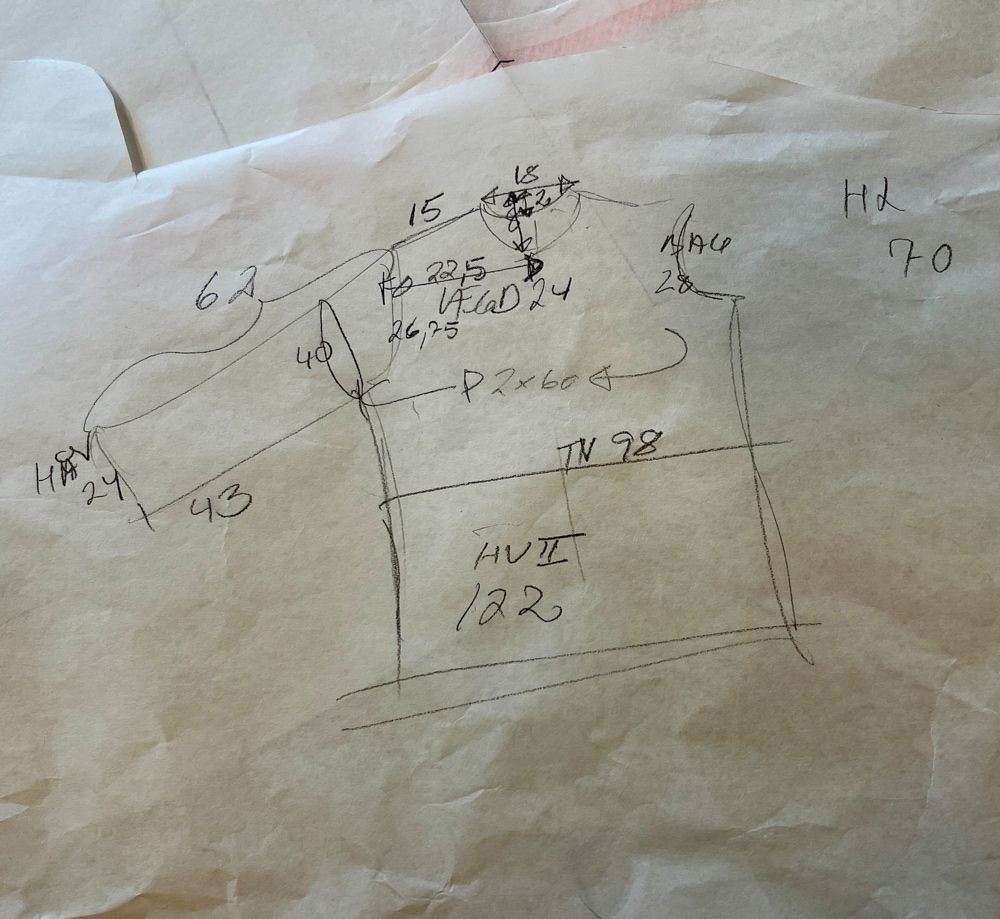
… oder besser banegård. Mein lieber Scholli, das war eine Herausforderung. Derartig sprachlich gechallenged, wie es auf Neudeutsch so schön heißt, war ich zuletzt, als mein Revisor versucht hat, mir den Jahresabschluss zu verklickern zum ersten Mal… Steuergedöns ist schon in der eigenen Sprache nicht immer leicht zu verstehen. Versteht ihr, was ich meine? Ok. […]
Zwischenstand Oktober. Von Kreativkisten, Workshops, Atelierhausveränderungen und Herbst Challenges
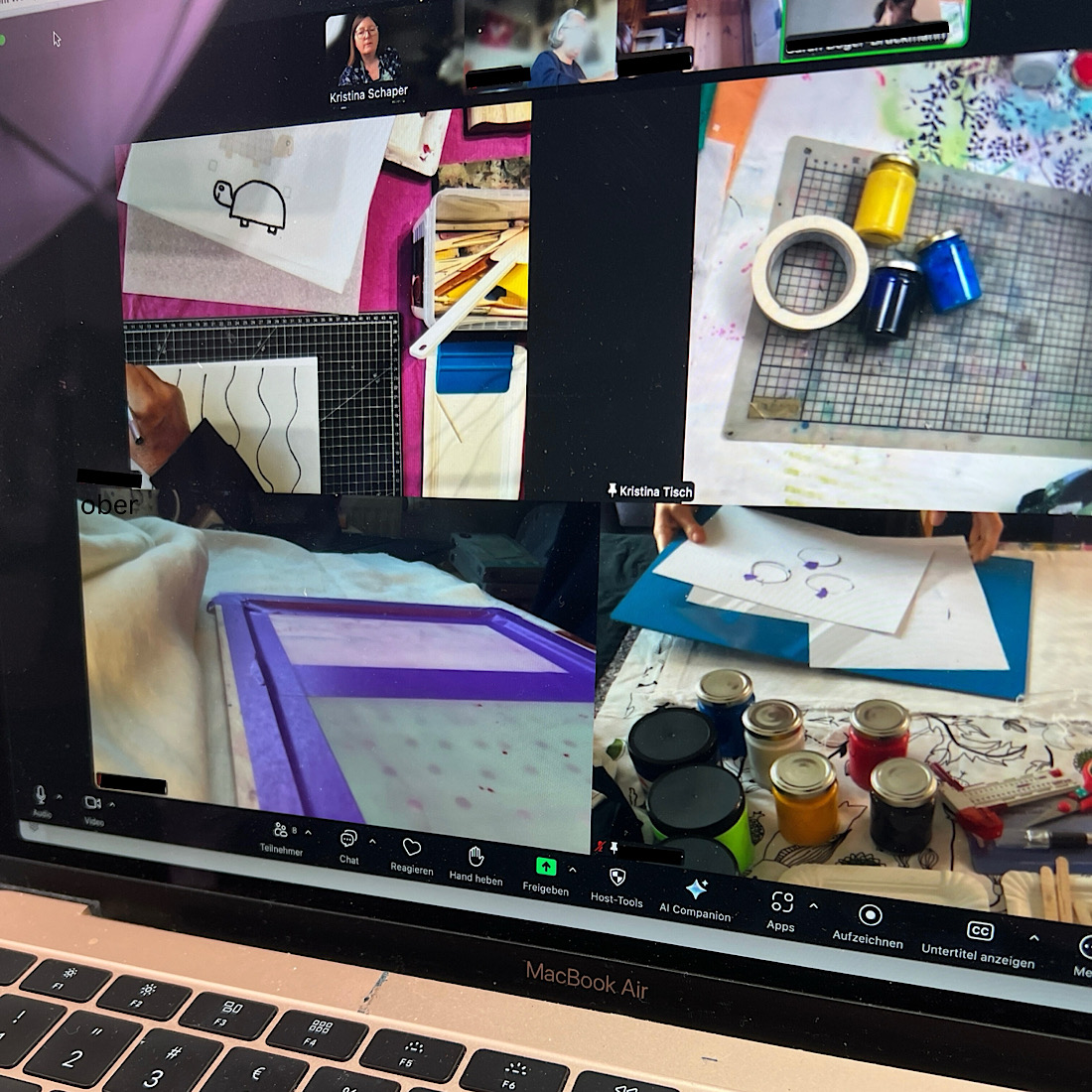
Pünklich zum Ende der Herbstferien (meine Familie hat sich heute Morgen verabschiedet und ist mittlerweile auf dem Weg gen Dänemark) scheint heute wieder die Sonne. Die letzten Tage war es leider eher grau und ein wenig trübe.Ich bleibe noch ein paar Tage, am Dienstag geht es direkt weiter nach Bielefeld zum Workshop bei Claudia. Ich […]
12 von 12 im Oktober – ab in den Süden
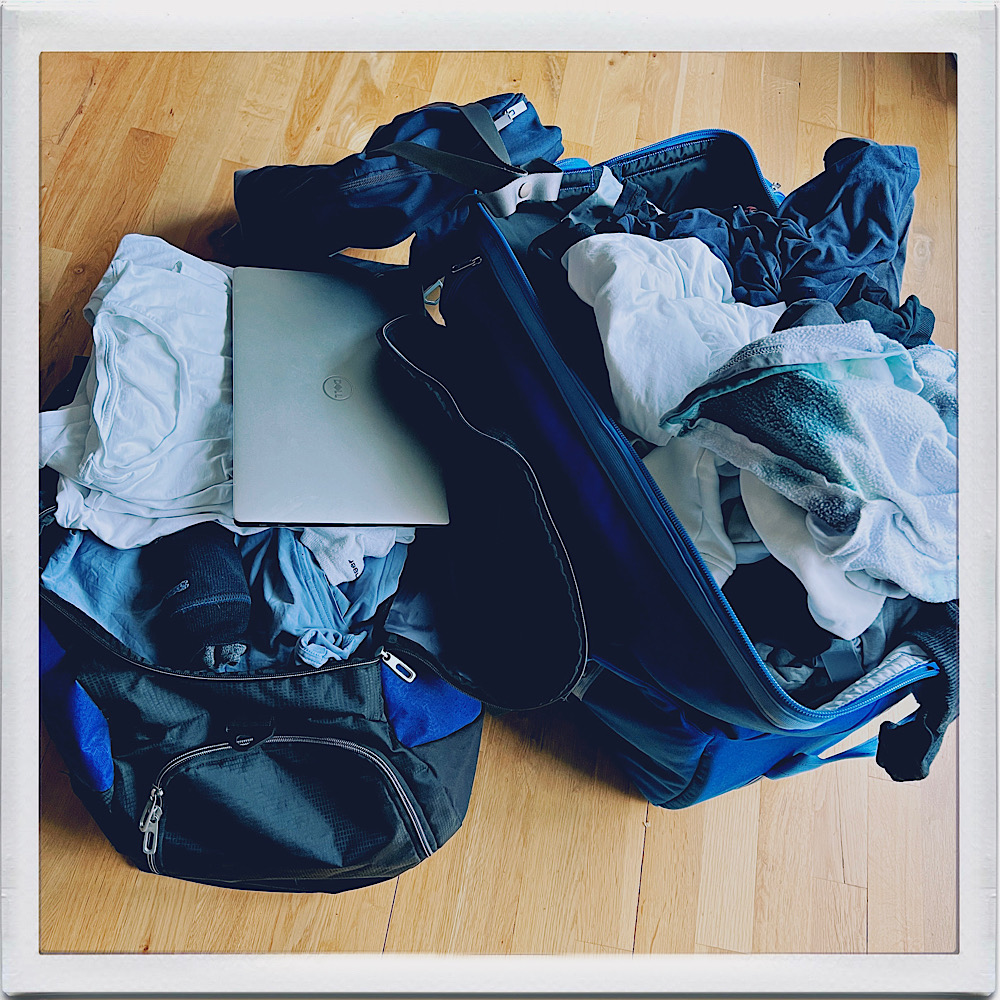
Gestern war der 12. Oktober und deshalb gibt es heute die 12 Bilder meines Tages. Der 12. ist ein Sonntag. Ausschlafen ist nicht, heute ist ein Reisetag. Seit Freitag sind Herbstferien und wir fahren, wie fast jedes Jahr, nach Deutschland auf Familienbesuch. Gefrühstück wird was da ist und wie es vom Timing her passt. Taschen […]
Tschüssi Lauenbrück! Die Bilder vom Siebdruckkurs im August
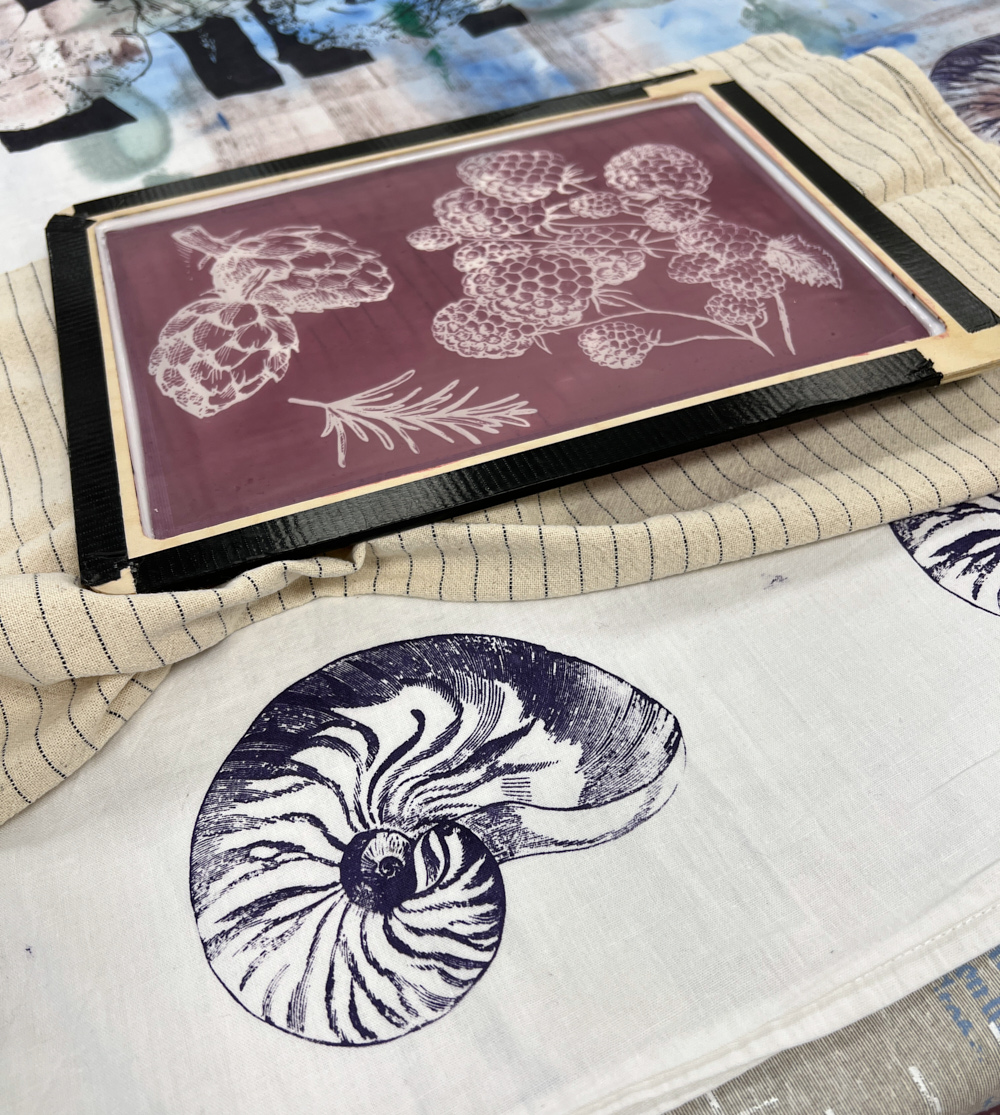
Hach ja, jetzt bin ich doch ein kleines bisschen wehmütig, wo ich die Bilder vom letzen, extralangen Siebdruckworkshop in Lauenbrück für diesen Blogbeitrag zusammengestellt habe… es war nämlich wirklich der letzte Workshop, den ich zusammen mit Britta als Veranstalterin ausgerichtet habe. Die großartigen Räumlichkeiten der Grundschule in Lauenbrück stehen uns leider nicht mehr zur Verfügung […]
Septemberdage
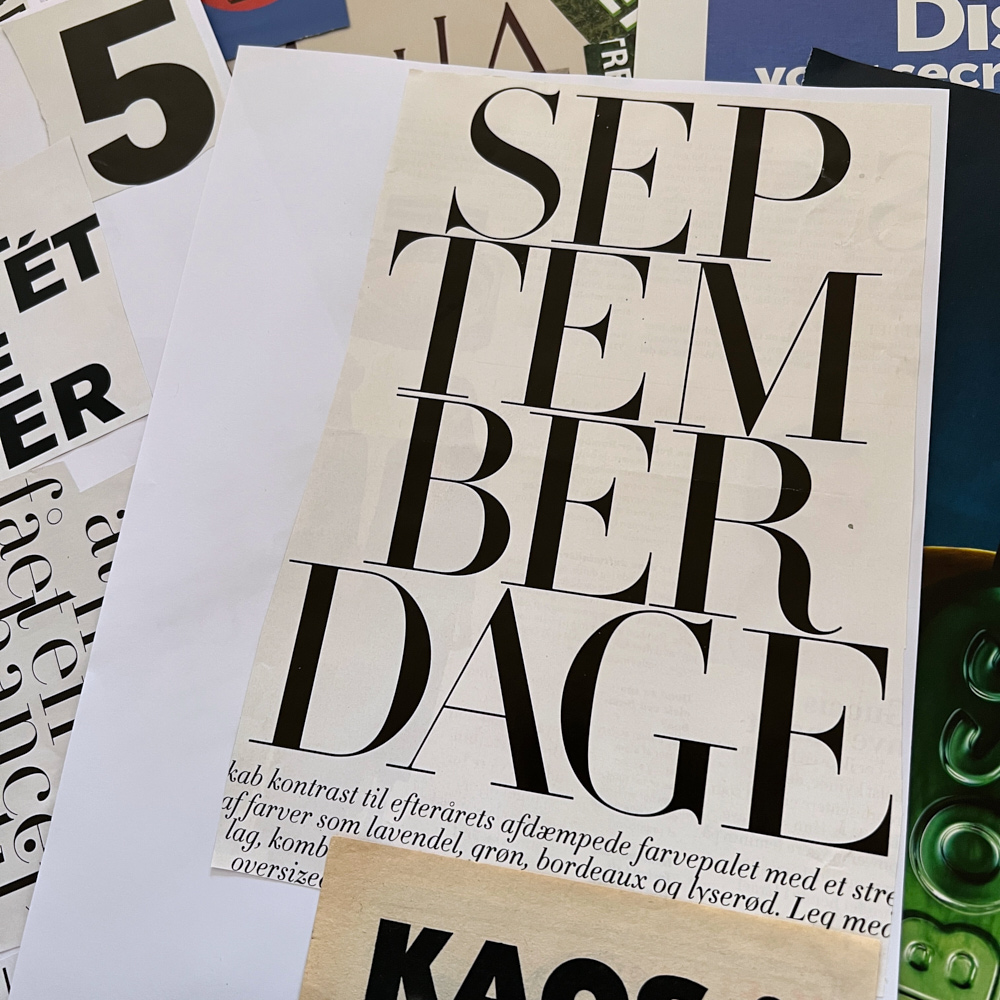
Der September hat sich bislang von seiner guten Seite gezeigt. Besonders während der ersten Tage war es noch mal richtig schön warm, um die 25°. Die Jungs nutzen jede Gelegenheit zum Baden, eben mal schnell ins Wasser zu springen. Und mein Mann geht mit dem Kajak aufs Wasser, sobald er von der Arbeit nach Hause […]
Schnipp Schnipp. Hand und Fuß für meine Collagen
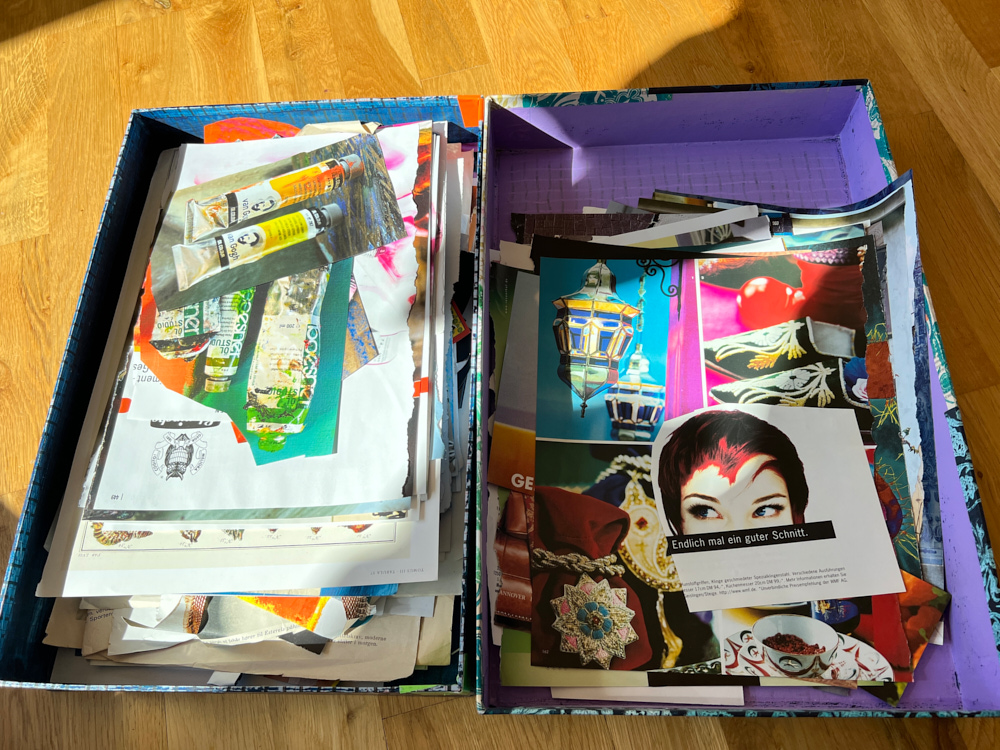
Wie ihr ja wahrscheinlich bereits wisst, öffne ich mehrmals im Monat den Zoom-Kursraum in meinem Atelierhaus und alle Inhaber*innen eines gültigen Monats-oder Jahrestickets können zum Workshop kommen und mit mir gemeinsam zu einem von mir vorbereitetem Thema, einem Impuls o.ä. arbeiten. Für alle, die es zu den Live-Terminen nicht schaffen, stelle ich eine leicht gekürzte […]
Gelliprinting og serigrafi – FOF Workshop in Kopenhagen
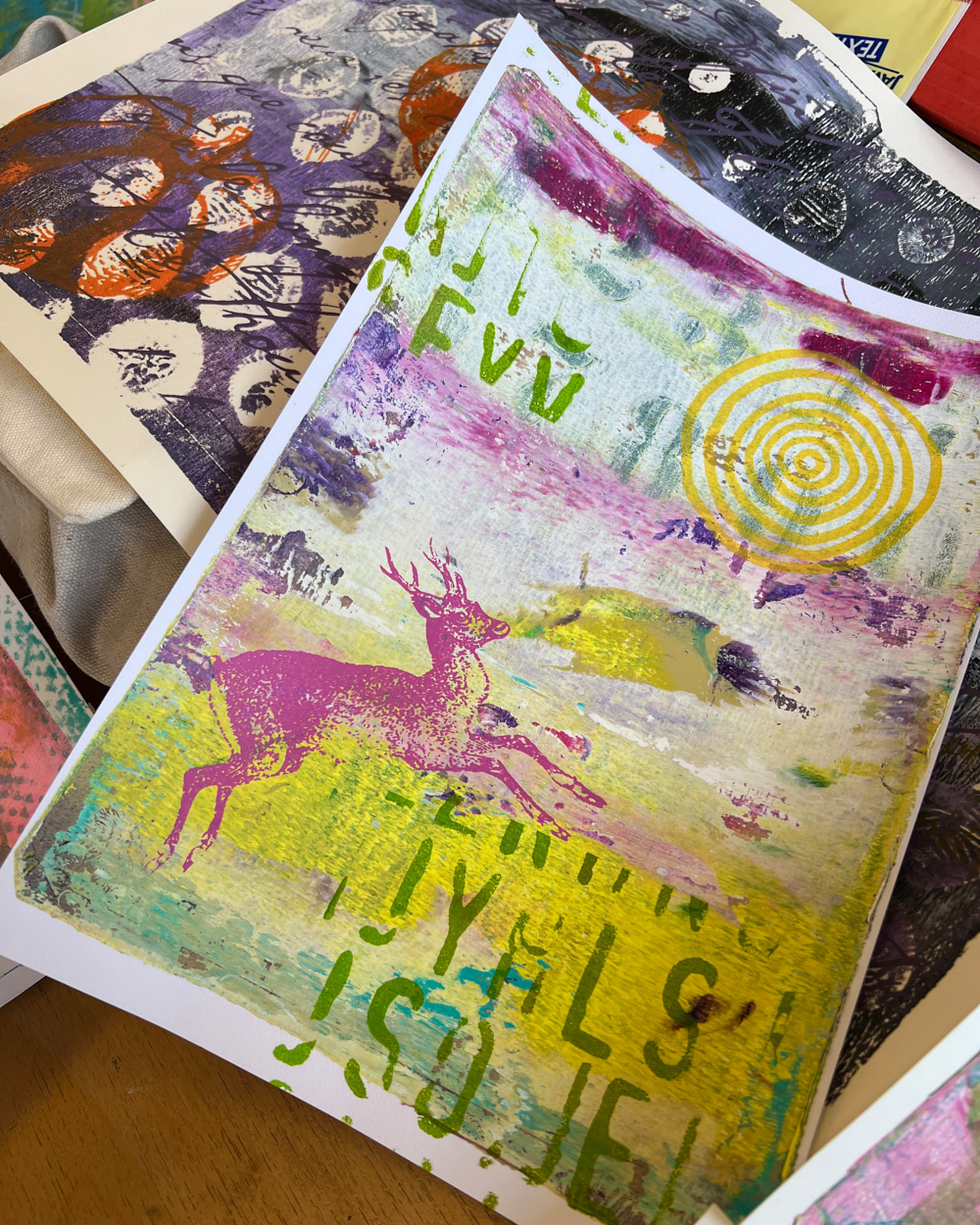
Letztes Wochenende durfte ich zum zweiten Mal in diesem Jahr in den schönen Werkstatträumen der FOF in der Innenstadt von Kopenhagen meinen zweitägigen Kurs „Gelliprinting og serigrafi“ halten. Wenn die beiden Powertechnikech Siebdruck und Gelliprint aufeinander treffen, wird es immer spannend! Hintergründe im Monorint mit Gelliprint, grafische Elemente im Siebdruck. Über- und nebeneinander. Bunt oder […]
12 von 12 am 15.
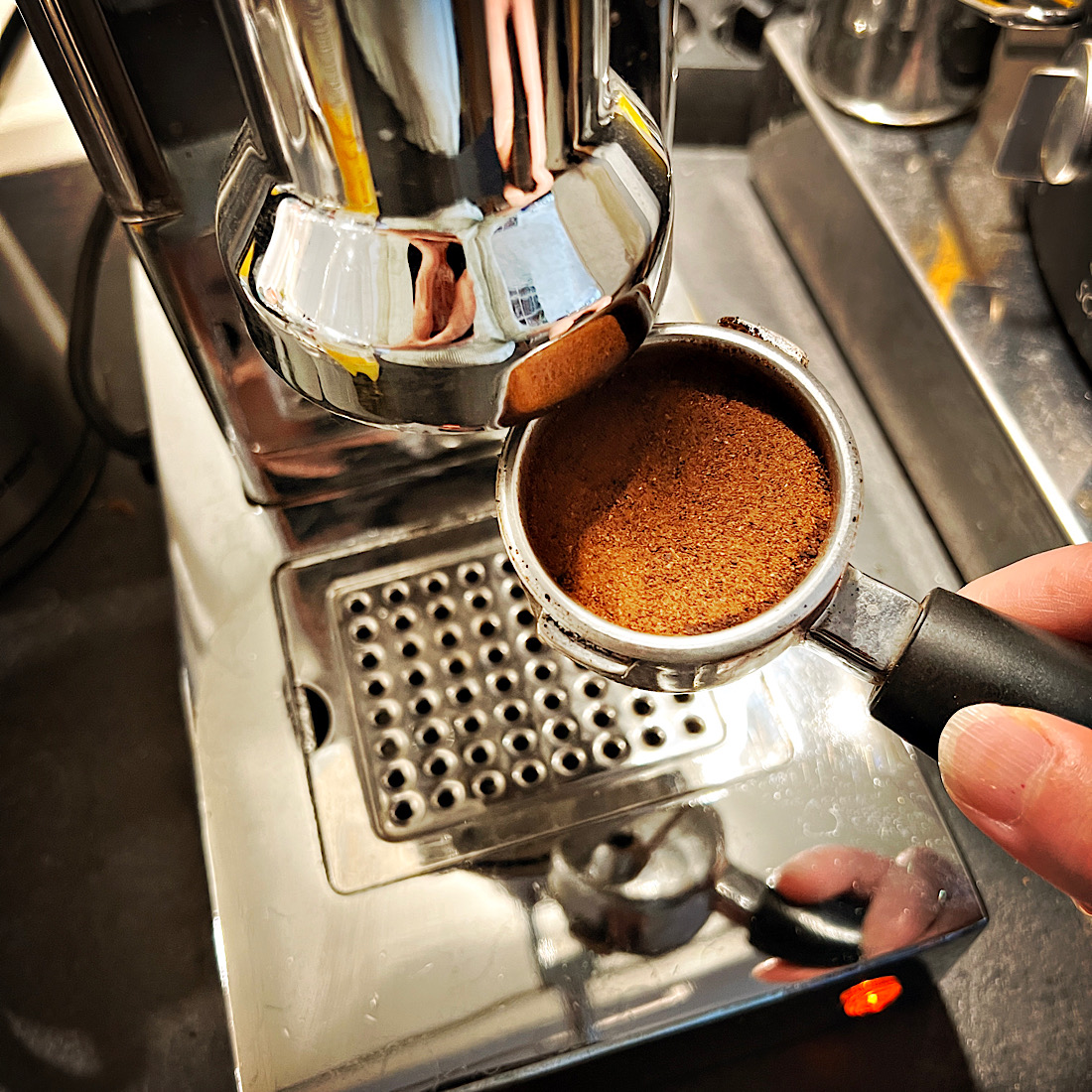
Letzten Freitag war der 12. September. Ich schaffe es eigentlich nie, noch am selben Abend die 12 Bilder des Tages, für die Sammlung bei Caro fertig zu bearbeiten und den Beitrag zu schreiben. Und da ich am Wochenende einen Workshop in Kopenhagen hatte, habe ich es auch am folgenden Tag nicht geschafft. Macht nix, starten […]
Kleine Freuden….
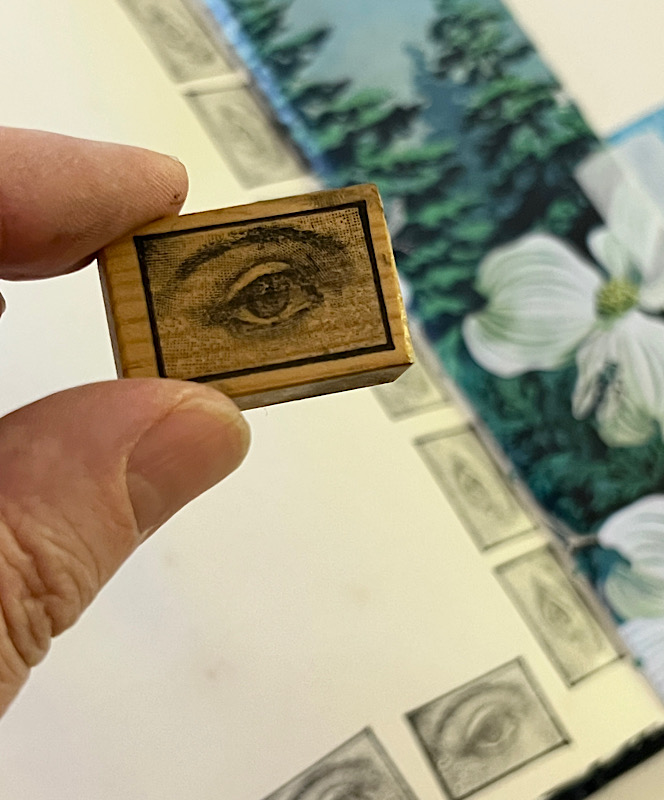
Über diesen entzückenden Stempel bin ich gestoßen beim Durchkämmen meiner Materialkisten. Ein Geschenk von der lieben Ulrike. Mein Lager ist jetzt soweit eingerichtet, dass ich dort arbeiten kann. Die Aussortierchallenge geht weiter. Meine aktuelle Strategie: Den Timer stelle ich auf eine Stunde. Das ist genug Zeit, um sich EINE Kiste, EINEN Stapel, EINEN Haufen vorzunehmen. […]
Stempel Muster Sammelalbum – Extended Version
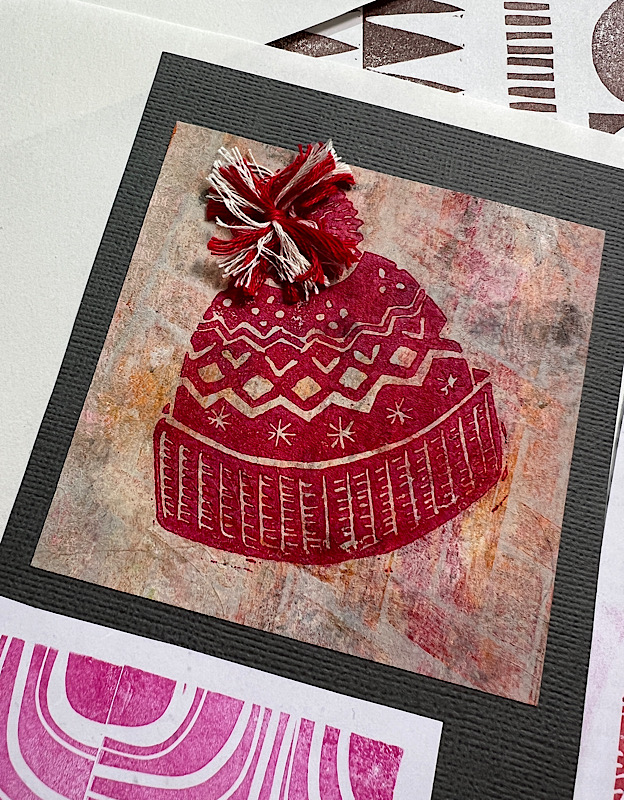
Während ich diesen Blogpost schreibe, sitze ich im Zug zurück nach Kopenhagen. Ein paar schöne Workshoptage in Lauenbrück liegen hinter mir. Wir haben intensiv gekünstlert und gesiebdruckt und ich habe ich sehr gefreut, so viele altbekannte Gesichter (und ein neues) gesehen zu haben. Ein kleines bisschen wehmütig war uns allen zumute, das war nämlich fürs erste […]
Monatsspaziergang im August – Wilde Gärten beim Naturpark Amager
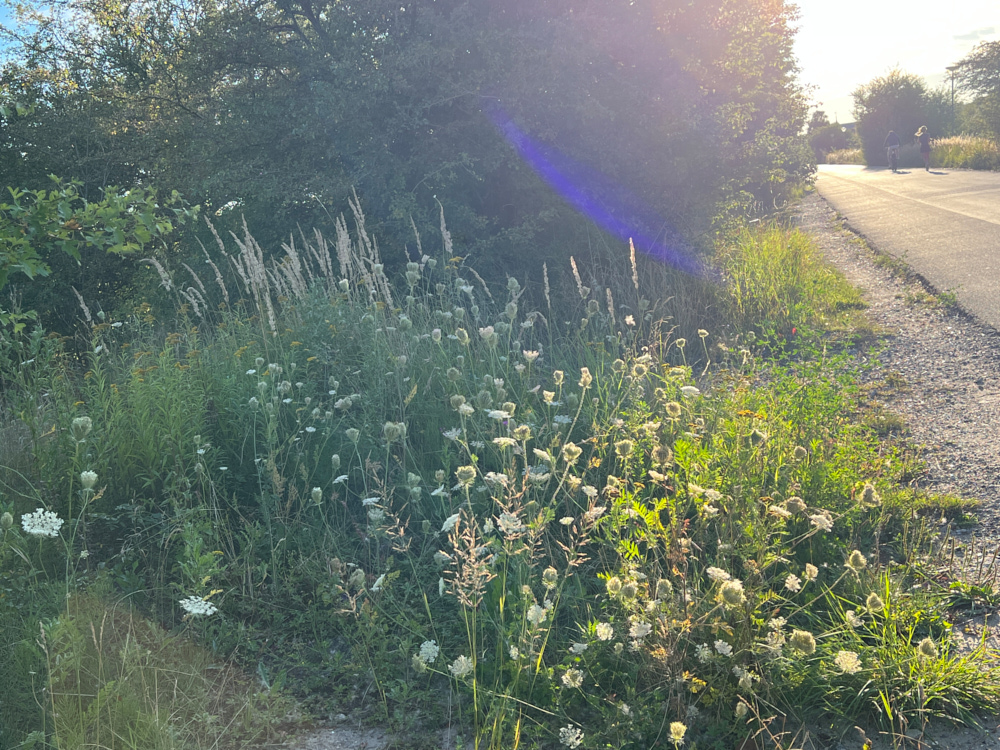
Die letzten Tage im August. Mir geht es wenig wie der Maus Frederick. Ich sammele die Sonnenstrahlen, um sie für den erwarteten, langen, dunklen Winter zu speichern…zur Sicherheit auch noch fotografisch. Noch ist es warm genug, um ohne Jacke einen Abendspaziergang durch das Kleingartenparadis am Amager Naturpark zu machen. Mein Mann und ich sind beide […]
Ideebuch, Collage, Slow Stitch – Das Herbstprogramm im Atelierhaus
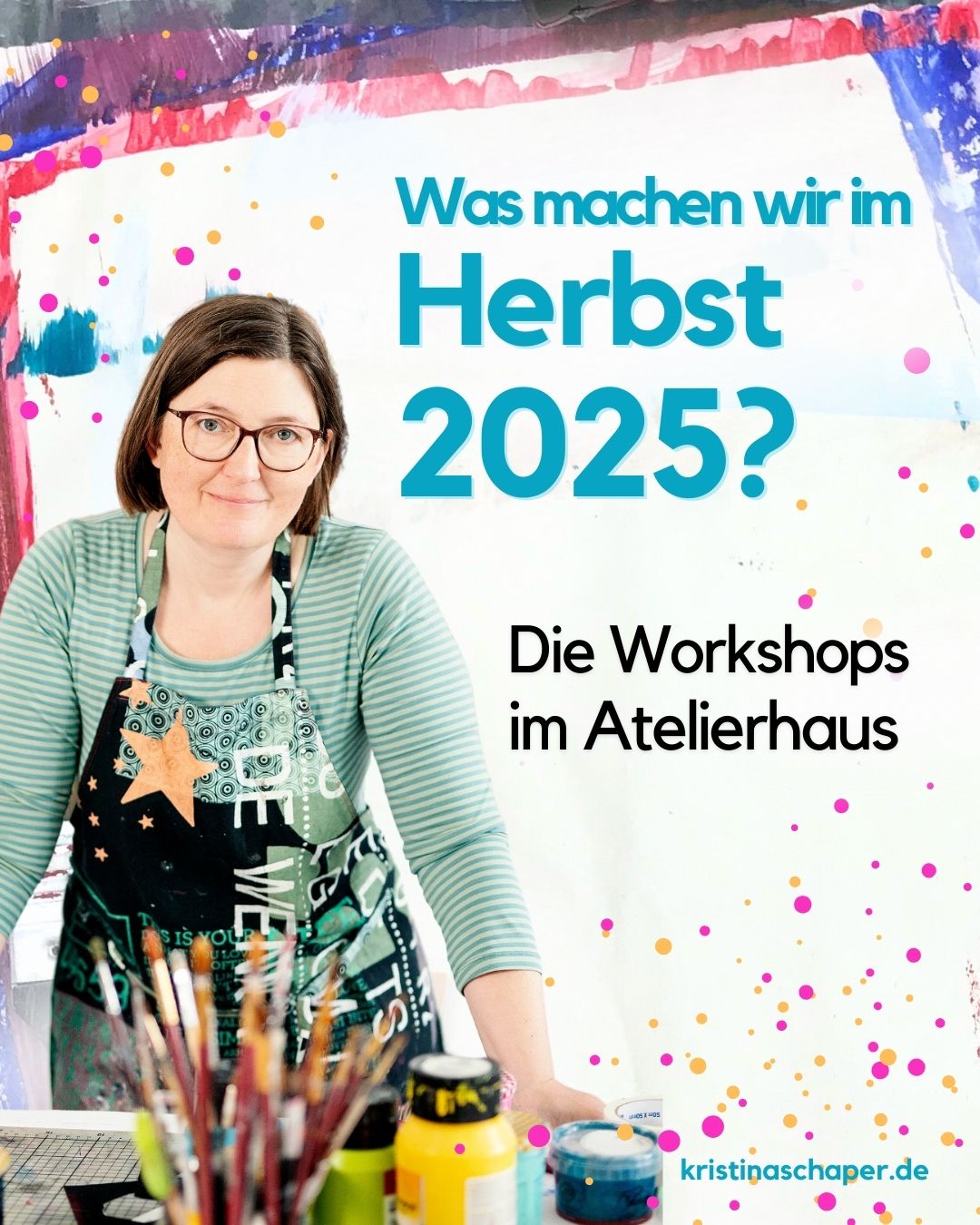
Die Bau-und Aufräumarbeiten am Atelierhaus gehen weiter. Wie im echten Leben ist so ein digitales Haus (gerade, wenn frau es mehr oder weniger von Null aufbaut) ein Never Ending Project. Es wird nie fertig, wenn du glaubst, etwas ist jetzt abgeschlossen und du dich der Hoffnung hingibst, für die nächsten 12 Monate würde mal Ruhe […]
The Aufräumjournaling goes on…
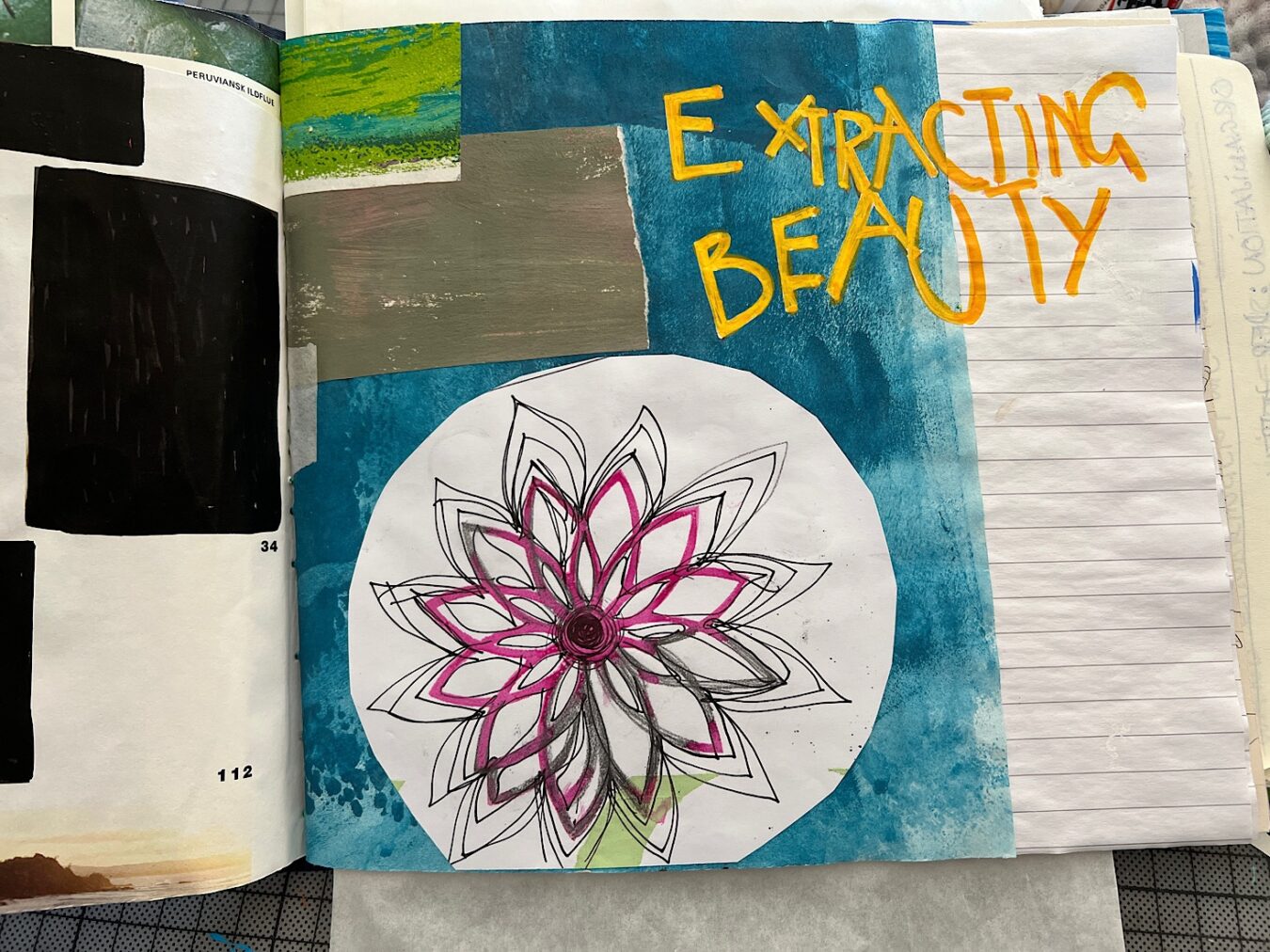
Meine bevorzugten Acrylmarker sind von Molotow. Endlich ein Weiß, was wirklich ganz gut deckt! Besonders mag ich an den Stiften, dass sie nachfüllbar sind und ich einzelne Spitzen nachkaufen kann. Damit mir die Stifte und Schwämmchen nicht eintrocknen, wasche ich die von Zeit zu Zeit aus. Bis jetzt klappt das ganz gut. Meine Hand Lettering […]
Aufräumjournaling im August
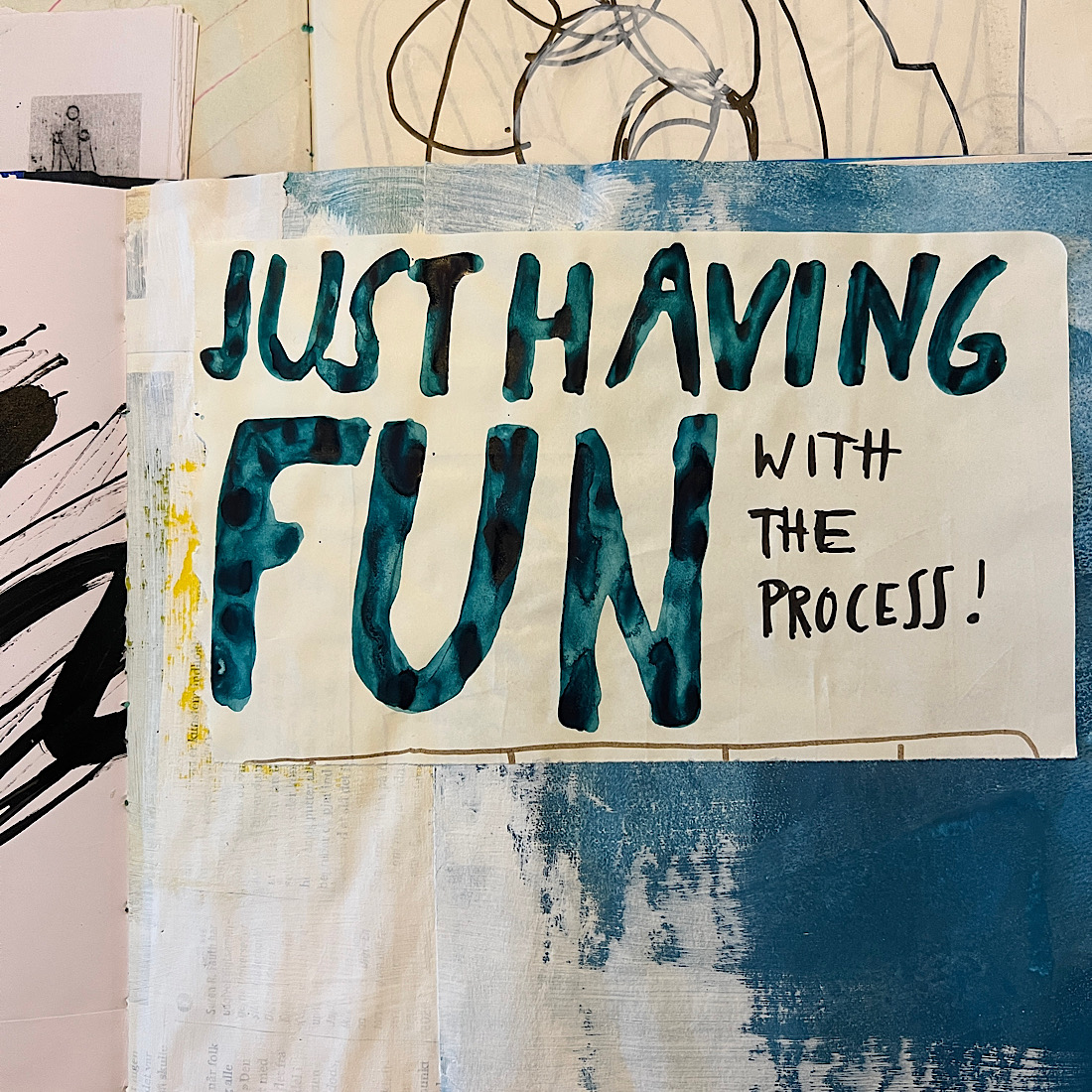
Neulich wollte ich das neue iPad Pro von meinem Mann ausprobieren. Dazu ist es vonnöten, sich mit der Apple ID anzumelden. Alles kein Problem. Bei den halbwegs sicheren Passwörtern habe ich es schon lange aufgegeben, mir die merken zu wollen. Wie auch immer. Ich konnte den Zettel (und ich will jetzt null Kommentare über die […]
